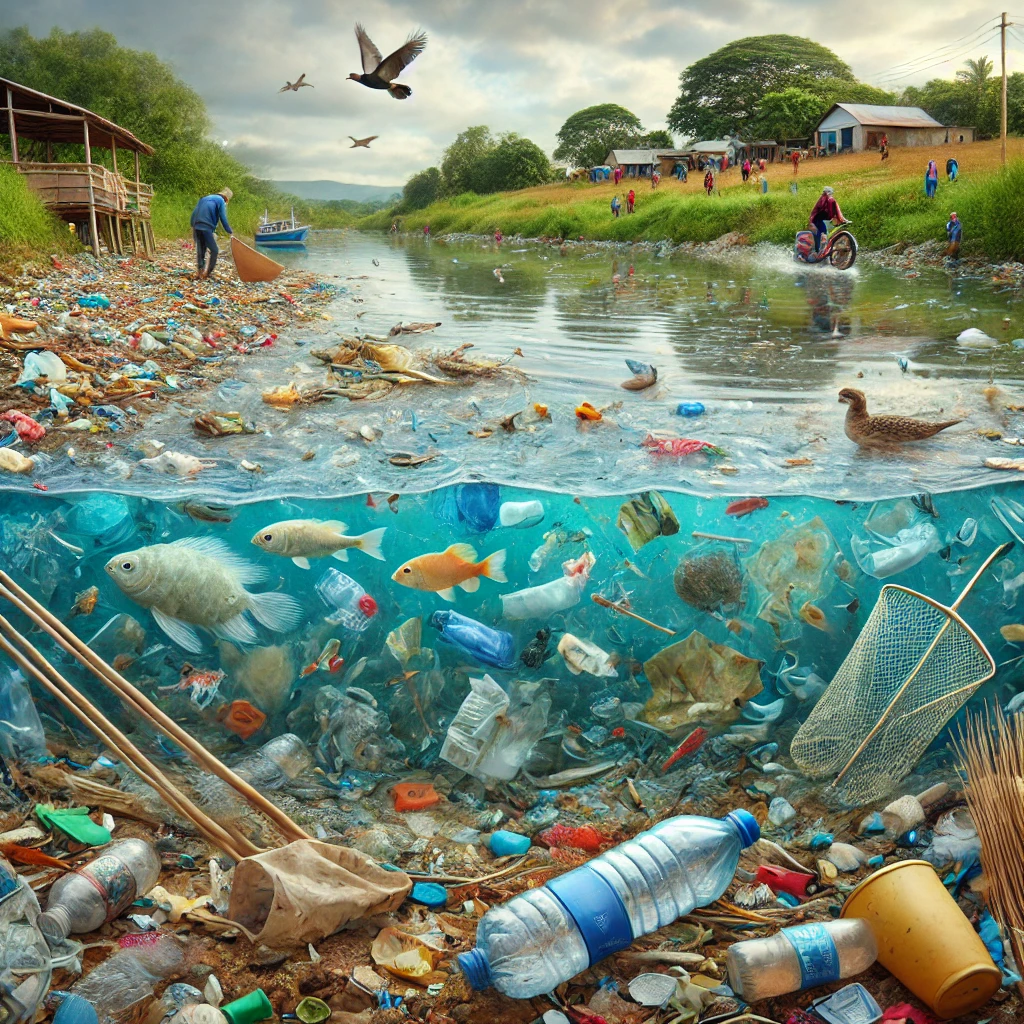
Microplastics in Freshwater Systems: Exploring How Pollution in Rivers and Lakes Affects Both Local Wildlife and Human Communities
While much of the global conversation around plastic pollution focuses on the oceans, microplastics have been infiltrating another critical water source: freshwater systems. Rivers, lakes, and streams are now reservoirs for microplastic particles, which pose a significant threat to both aquatic wildlife and the human communities that depend on these ecosystems for drinking water, agriculture, and recreation.
What Are Microplastics?
Microplastics are tiny plastic particles less than 5mm in size, originating from various sources. Some come from the breakdown of larger plastic items like bottles and bags, while others—such as microbeads in cosmetics or fibers from synthetic clothing—are intentionally small. These particles are often invisible to the naked eye, but their impact is profound.
How Microplastics Enter Freshwater Systems
Microplastics find their way into freshwater systems through several pathways:
- Runoff from Landfills: As plastic waste accumulates in landfills, rainwater can carry plastic particles into nearby rivers and lakes.
- Industrial Discharges: Factories that produce or process plastics may release microplastics into nearby water bodies, either intentionally or accidentally.
- Wastewater Treatment Plants: Despite advancements in filtration, many treatment plants are not equipped to fully capture microplastics, allowing them to enter rivers and lakes through treated water.
- Surface Runoff: Urban areas, with their abundance of plastic debris, contribute to microplastic pollution during rainfall, which washes the particles into storm drains and eventually into freshwater bodies.
Impact on Aquatic Wildlife
Microplastics pose significant risks to wildlife in freshwater ecosystems. Fish, amphibians, birds, and even insects mistake these particles for food, ingesting them with serious consequences:
- Physical Harm: Microplastics can accumulate in the digestive systems of fish and other wildlife, leading to malnutrition, internal injuries, and even death.
- Chemical Contamination: Plastics often contain harmful chemicals, such as BPA and phthalates, which can leach into the water or be absorbed by wildlife. These chemicals disrupt hormones and reproductive systems in aquatic species, reducing their ability to reproduce and thrive.
- Impact on the Food Chain: When smaller organisms like zooplankton and small fish ingest microplastics, they pass these contaminants up the food chain. Larger predators, including birds and mammals, accumulate higher concentrations of plastics and toxins, creating a cascade of negative effects throughout the ecosystem.
The Human Connection: Microplastics and Community Health
Human communities are also deeply affected by microplastic pollution in freshwater systems. People who rely on rivers and lakes for drinking water, fishing, and farming face a number of risks:
- Contaminated Drinking Water: Studies have found microplastics in drinking water sources around the world. Though the full health effects of microplastic ingestion in humans are still being studied, early research suggests that these particles can enter the human body and cause cellular damage, inflammation, and immune system disruptions.
- Food Contamination: Fish and other aquatic organisms that ingest microplastics become part of the human food chain. This means that the chemicals and toxins associated with microplastics may eventually end up on our dinner plates, posing potential long-term health risks.
- Economic Impact: Communities that rely on fishing or tourism linked to freshwater systems may face economic challenges as the health of their ecosystems declines. Declining fish populations and polluted water bodies discourage tourism and reduce the income of local industries that depend on clean water.
Addressing the Issue: What Can Be Done?
Tackling the issue of microplastic pollution in freshwater systems requires both local and global efforts. Here are some strategies to mitigate the problem:
- Improved Waste Management: Ensuring that plastic waste is properly collected, recycled, or disposed of can prevent it from entering freshwater systems. Governments and communities must invest in efficient waste management infrastructure and encourage individuals to reduce single-use plastics.
- Enhanced Filtration Systems: Upgrading wastewater treatment plants with advanced filtration technologies capable of capturing microplastics is crucial. These systems can help limit the amount of microplastics entering rivers and lakes through treated water.
- Industry Regulation: Holding industries accountable for their plastic waste and emissions can reduce the amount of microplastics entering freshwater bodies. Encouraging sustainable practices and requiring industries to monitor and reduce plastic pollution can have a significant impact.
- Public Awareness and Action: Educating communities about the dangers of microplastics and encouraging them to take action—such as reducing plastic use, supporting bans on microbeads, and participating in clean-up efforts—can help mitigate the problem at its source.
- Further Research: More research is needed to fully understand the health effects of microplastic pollution on humans and wildlife, as well as to develop new methods for removing microplastics from water systems. Governments and research institutions must invest in scientific studies to better tackle this growing crisis.
A Call to Action
Microplastic pollution in freshwater systems is an urgent environmental and public health issue that demands immediate action. By addressing this invisible threat now, we can protect aquatic ecosystems and ensure the health of the human communities that depend on them. As individuals, we can reduce our reliance on plastic products, advocate for stronger environmental policies, and support initiatives that aim to clean up our rivers and lakes.
Only through collective effort can we safeguard our freshwater resources and create a cleaner, healthier future for all.